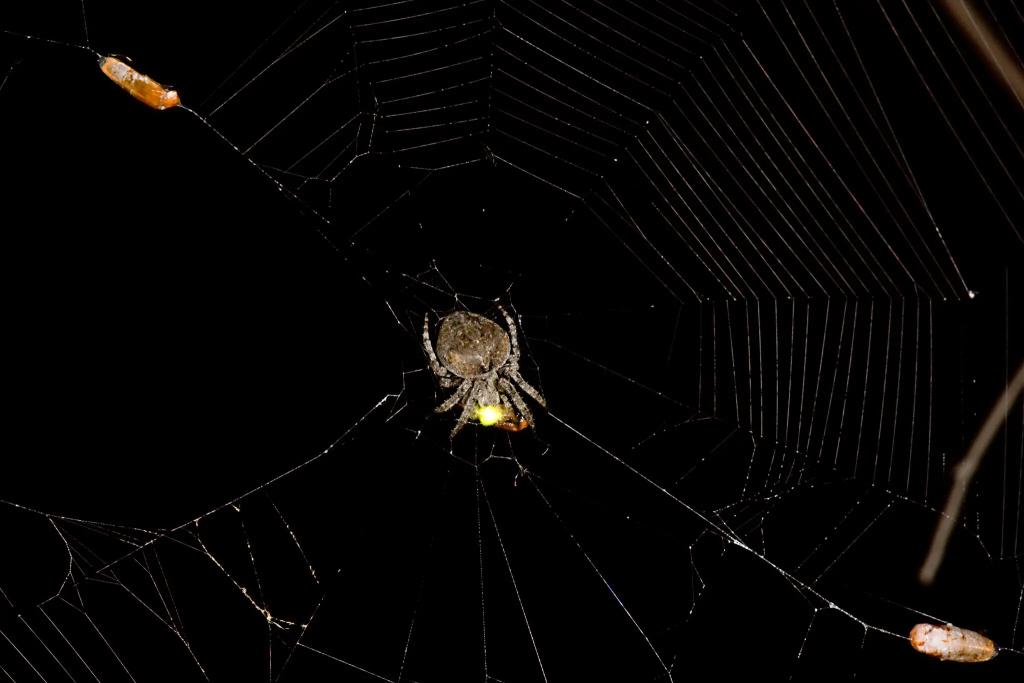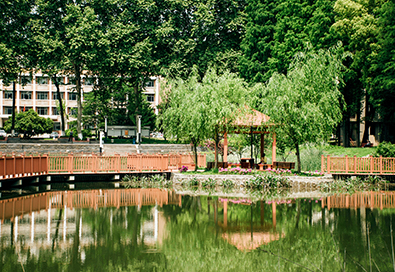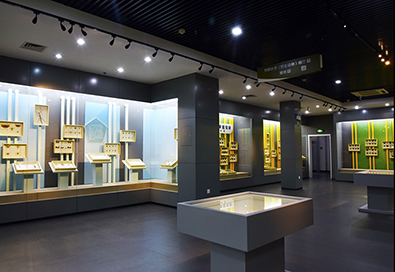Imagine being a male firefly when suddenly the telltale flashing of a female catches your eye. Enthralled, you speed toward love’s embrace — only to fly headfirst into a spider's web. That flashy female was in fact another male firefly, himself trapped in the web, and the spider may have manipulated his light beacon to lure you in.
This high-stakes drama plays out nightly in the Jiangxia District of Wuhan, China. There, researchers have found that male fireflies caught in the webs of the orb-weaver spider Araneus ventricosus flash their light signals more like females do, which leads other males to get snagged in the same web. And weirdly, the spiders might be making them do this, almost like hunters blowing a duck call to attract prey.
"The idea that a spider can manipulate the signaling of a prey species is very intriguing," said Dinesh Rao, a spider biologist at the University of Veracruz in Mexico. "They show clearly that a trapped firefly in the web attracts more fireflies.” Dr. Rao was not involved in the research, but served as a peer reviewer of the paper published Monday in the journal Current Biology.
Xinhua Fu, a zoologist at Huazhong Agricultural University in Wuhan, was in the field surveying firefly diversity when he first noticed that male fireflies seemed to end up ensnared in orb-weaver spider webs more often than females. Wondering if the spiders were somehow specifically attracting males, he teamed up with Daiqin Li and Shichang Zhang, animal behavior experts from nearby Hubei University, to get to the bottom of this sticky mystery.
Working near paddy fields and ponds, the researchers observed the flashing of trapped male fireflies and saw that it more closely resembled that of females than of free-flying males. Trapped males flashed using only one of their two bioluminescent lantern organs, and they made one flash at a time rather than multiple flashes in quick succession, the same lighting signals females send when trying to attract males.
To see if this altered flashing could be luring more males to their doom, the team identified a whopping 161 webs with a trapped male firefly and randomly assigned one of four conditions to them: Either they removed the spider, blackened out the firefly"s lanterns with ink, did both or did neither. They then diligently monitored each web every five to 10 minutes and recorded how many new males were caught.
ImageA spider at the center of its web looming over a glowing firefly, with two other fireflies at about the 10 o'clock and 4 o'clock positions at the end of the web.

With apologies to Mary Howitt, he knew the silly Fly would soon come back again. Xinhua Fu
The flashing of trapped males mimicked that of females only when a spider was present in the web; males in a web alone still flashed differently than free-flying males, but not in a way that resembled females as much as when a spider was there. Female-like flashing seemed to act as a siren song for other male fireflies, with those webs catching an average of 1.6 more males, compared with just 0.2 more males for webs without female-like flickering.
"When we removed them from the web and allowed a short recovery period, the male fireflies often resumed their normal multi-pulse flashing pattern," Dr. Li said. He and his colleagues suspect that the spiders are somehow manipulating the male fireflies to flash like females in order to attract more prey to their webs — but if they are pulling the strings, the big question is how they pull this off.
It could be that the spider's venom alters the firefly's bioluminescence somehow, or that when the spider wraps up its victim, it bites into and damages the lanterns. Dr. Rao thinks venom is more likely, as does Dr. Li.
"Spiders didn't bite the lantern directly," Dr. Li said, instead they targeted other soft body parts. "Perhaps the spider's venom disrupts normal flashing behavior by interfering with the delivery of oxygen supply" to the firefly's light-making systems. Unraveling this tangled web of manipulation is a target of future research.
Dr. Li is also interested in other predators that might be manipulating their prey to meet their own selfish needs. "Predators engaging in indirect, dynamic aggressive mimicry by manipulating the behavior of already-captured prey to generate deceptive signals might be a general strategy," he said. This could extend beyond the visual to other senses, like smell and hearing.
Though much remains unresolved, if you’re a lonely firefly looking for a spark on a summer night, it might be worth giving your beloved a second look.























